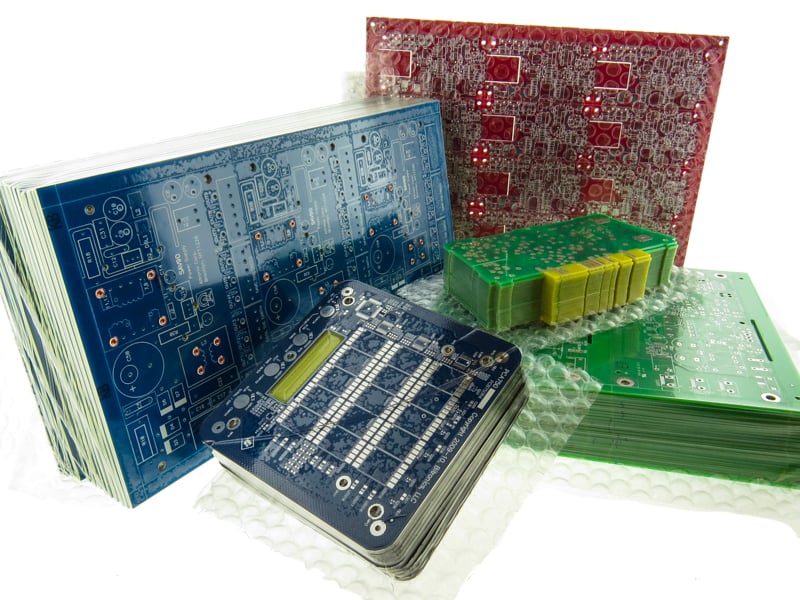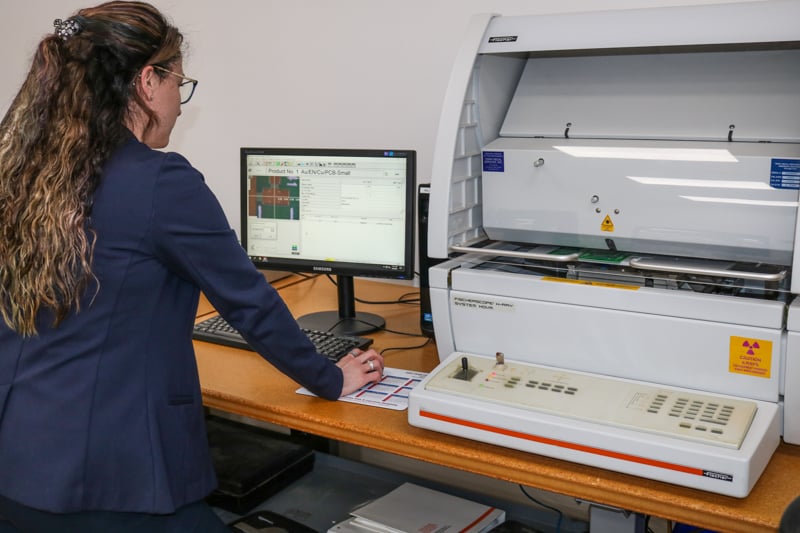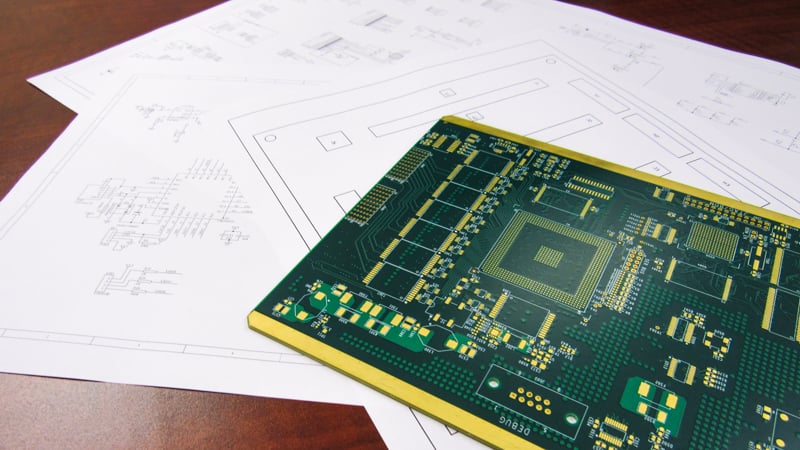As our world continues to evolve to an online buying market for everything for our homes, schools, and offices, you may have noticed in some cases, the quality is not exactly what you thought you saw and bought online. We have all had that men’s XL shirt we bought for dad’s birthday arrive only to fit our 7-10-year-old, or the gift for Christmas arriving in January. Is it cost vs. quality, convenience vs. going out shopping, or is it the ongoing COVID-19 situation?
It is no surprise that our universe is getting smaller, and online options are greater than ever, but at what cost? PCBs are a build-to-print product. Online buying is everywhere, but who is inspecting the finished product, and are they good?
In this blog post, we will point out some items you can easily determine and some not so easy.
Cosmetic Aspects of the PCB
The cosmetic aspects of the printed circuit board (PCB) are the easiest to determine if what you ordered is what you received in. Each PCB has its own characteristics. Solder mask, for example, can be supplied in many different colors. Green, red, blue, black, and white are the most common colors carried by printed circuit board manufacturing services. Although the colors do come in a wide variety most online service offer green only. The mask can also have an option of a glossy or matte finish.
One side masked or both sides is also easy to confirm by looking at both sides of the part. Is it what you ordered?
What is not easy to confirm at a glance is the coating itself: the type applied, did you receive in a soldermask certification stating what type of mask, lot code, and date code was used. On the part itself, was one or two coats applied. Some PCBs require two coats while others a single coat. This is difficult to see with the naked eye and will require magnification.

PCBs can be supplied in many different solder mask colors.
What Should You Look For?
In some cases, production will apply a second coat when there is an application issue or a registration issue. Using a magnification instrument, microscope, or hand tool eye-loop will allow you to see if two coats were applied. Often, the amount of mask is not critical whether one or two coats are applied will not impact the quality of the PCB. However, if there are critical component heights that require a particular clearance to be me, too much mask can be an assembly nightmare.
Legend or silkscreen is another easy-to-see attribute of the PCB. Common colors are white, black, and yellow, you can also order red or blue, however, the common color offered online is white. Did you receive in what was stated in your documentation?
Finally, the next and last easy to see attribute is the surface finish. From a glance, you can see what the finish is that has been applied and if you are surface finish savvy you can tell what was applied. Hot air solder leveled, ENIG, immersion gold, immersion silver, lead free HASL, OSP, and hard gold are a few of the different finishes available. You can see the color and assume what you ordered is present on the part, but is it correct?
Dimensional
Surface finish is not as easy to determine as the colors of mask and legend. The surface appearance can be misleading what looks like HASL, hot air solder level could in fact be lead free HASL. The immersion surface finishes such as silver or tin, they look similar where the immersion gold definitely looks gold. Assembly components to be applied using different parameters, if the part does not have the appropriate surface finish your assembly may be on hold while new boards are mad or new components are bought. Usually making boards over is the quicker of the two.
The main concern on surface finish is at the assembly level but should be verified in shipping documentation that the correct finish and thickness per IPC have been met. The surface finish thickness applied, if it is too heavy or thick, the contract manufacturer will have processing issues. Lead free component are assembled with a higher temperature than leaded. Just as too much final finish can make it difficult to assemble the parts, causing scrap and remaking of the PCBs too thin of an application can also be a problem. Surface finishes have a shelf life; too thin of a surface finish applied can cause wetting problems and drastically decrease your shelf life.
How do you determine if what you have received in meets IPC standards? Unfortunately, you must rely on your manufacturer to do the right thing: appropriately applying the correct finish, with the correct thicknesses, monitoring their process, taking surface finish readings on the final product, and supplying documentation stating true facts. Having the equipment to measure final thickness is the only way to tell if you have the appropriate amount is present on the parts received. If you suspect that your part is not meeting standards, there are third-party labs that will confirm this for you.

Fischer Scope X-Ray machine used to measure PCB surface finishes.
Epec does have a Fischer Scope X-Ray that is used to measure surface finish. This is a verification tool to be sure our manufacturers are compliant to IPC standards. This piece of equipment is a critical tool used daily in our inspection process for verification and to hold production accountable for inaccuracies.
Hole Sizes
Build-to-print is exactly that, a print or fabrication drawing is supplied to build a product, too. All aspects of the part should be defined within the supplied documentation. What attributes are needed to be met on the final goods delivered. Build-to-print is our specialty and some items often supplied incomplete. Often, dimensions for PCB size or hole sizes are not supplied. A board outline can be used and defaulting to industry standard is common using +\-0.005 for routing or +\-0.003 for plated hole sizes.
Reviewing your supplied drawing against the product received in for all physical dimensions is also an inspection requirement. Check the verbiage to the part, including part number and revision as well as mask, legend, and finish. PCB measurements, length, width, all cutouts, and overall thickness should all be defined with a tolerance and met on the final product. Own a set or two of calipers to check all the measurements you have documented.
Drill drawings should show all hole sizes and their locations, whether they are plated or non-plated and should have a tolerance as well as a symbol designated to each size. Owning a set of pin gauges to check individual hole sizes are imperative to your incoming inspection process. Spot checking holes of each size is typically good enough using pins, holes that are too small or too large can pose yet another assembly nightmare.

All aspects of the part should be defined within the supplied documentation.
Summary
Time is valuable to all of us these days, and 2020 was certainly challenging enough. At the end of the day, we want to receive in what we ordered no matter what the product is. The fact is that something similar or close enough to what we ordered shouldn’t be included in your PCB product. Remember, retain a copy of your online order receipt. Make sure your documentation is clear on what it is you expect to receive in and own a proper set of tools to check your supplied product.
Key Takeaways
- Cosmetic attributes can be misleading: Solder mask colors, legends, and finishes may appear correct at a glance, but coating type, thickness, and certification need documentation or magnification to verify.
- Surface finish must meet IPC standards: Finishes like ENIG, HASL, or immersion coatings require precise thickness; too much or too little can cause assembly defects, wetting issues, or reduced shelf life.
- Documentation is critical for accuracy: Build-to-print requirements should specify every dimension, finish, and hole size. Missing details often results in manufacturers defaulting to industry standards, which may not meet the intended design.
- Proper inspection tools are essential: Calipers, pin gauges, microscopes, and X-ray measurement equipment like a Fischer Scope provide the verification needed to confirm compliance and prevent costly rework.
- Clear communication prevents assembly delays: Ensuring that part numbers, revisions, coatings, finishes, and tolerances match supplied documentation avoids surprises during assembly and ensures boards perform as expected.
















